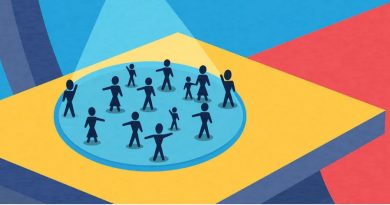Report: It’s Time to Get the ‘COVID Generation’ Back in School
A team of education specialists at UNICEF, the children’s representative at the United Nations, is making a big push for measures that can help kids get back to school. A new essay shared results of a World Bank study that estimated a schooling loss of between 0.3 and 0.9 years for students, with requisite learning loss and increased dropout rates. As a result, UNICEF researchers stated, this “COVID generation” of students faces diminished economic opportunities.
While 100% of North American schools are back in action, delivering in-person education, the same isn’t true for other parts of the world. Just 17% of the Middle East and North Africa are doing exclusively in-person instruction; it’s about 29% for South Asian regions; and 32% for East Asia and Pacific. Globally, about 64% of students have the opportunity to attend school in person.
Interestingly, the regions with the least number of new cases of COVID weren’t necessarily the same ones that had resumed in-person teaching. For instance, parts of Asia and North Africa had fewer cases than North America and Europe in proportion to their populations, yet countries in those regions hadn’t returned to full-time in-person teaching for all students.
Nor is lack of access to vaccination necessarily the reason for the wide disparity. Teachers in most countries were being offered the chance to be vaccinated as a priority group or as eligible adults — more than 80% worldwide. The exception to this was Sub-Saharan Africa, where just slightly more than half of the teachers (54%) were offered the possibility of being vaccinated.
Yes, the pandemic has exposed a “silver lining,” the authors wrote, in the form of digital solutions that have expanded “classroom boundaries to reach more children,” enabled kids with disabilities to take advantage of assistive technology, and engaged parents more deeply with their children’s schooling. At the same time, the pandemic also exposed the digital gap, with poorer countries and households struggling the most with a lack of internet connectivity. Some 463 million children — the largest share living in Sub-Saharan Africa — were unable to participate in digital learning, the report stated.
What’s needed to make a return to school possible, the report explained, were investments in remedial education, “alongside prioritizing teacher vaccination, physical distancing by reducing class- or cohort-sizes, improving ventilation and water sanitation and hygiene facilities in schools, and promoting compliance to hand hygiene and masks guidelines.”
“Children and young people need to be able to resume in-person schooling as soon as possible,” the report urged. And when they return to school, they must get access to support services, “including complimentary world-class digital learning,” that will help them get back on track.
The full essay is openly available on the COVID-19 Global Education Recovery Tracker, a joint program of UNICEF, the World Bank Group, and Johns Hopkins University.
Source:https://thejournal.com/articles/2021/12/01/its-time-to-get-covid-generation-back-in-school.aspx




